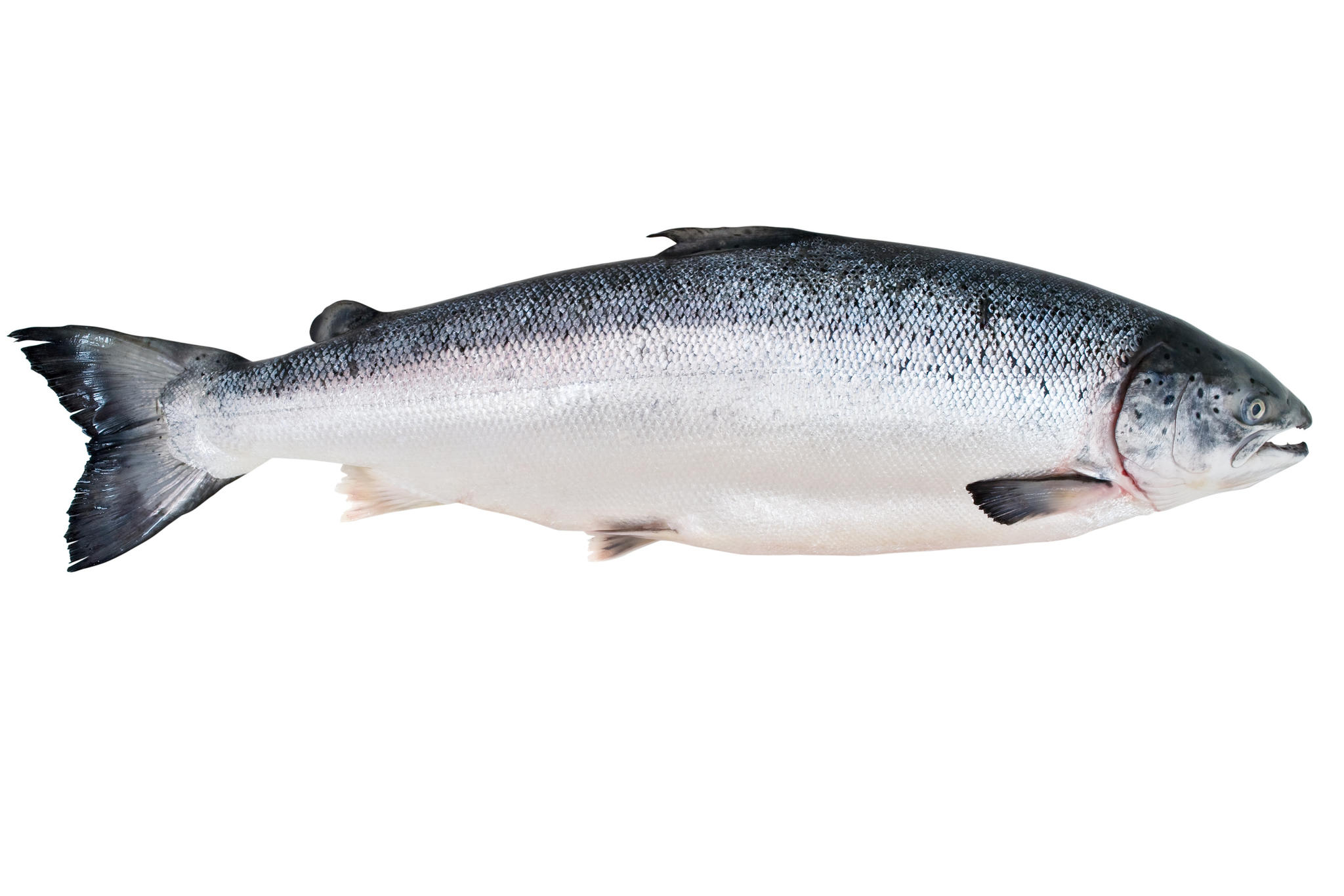Atlantic salmon
(Salmo salar)

Description
The Atlantic salmon (Salmo salar) is a species of ray-finned fish in the family Salmonidae.It is found in the northern Atlantic Ocean,in rivers that flow into the north Atlantic and,due to human introduction,in the north Pacific Ocean.Atlantic salmon have long been the target of recreational and commercial fishing,and this,as well as habitat destruction,has reduced their numbers significantly;the species is the subject of conservation efforts in several countries.Atlantic salmon are the largest species in their genus,Salmo.After two years at sea,the fish average 71 to 76 cm (28 to 30 in) in length and 3.6 to 5.4 kg (7.9 to 11.9 lb) in weight.But specimens that spend four or more winters feeding at sea can be much larger.An Atlantic salmon netted in 1960 in Scotland,in the estuary of the river Hope,weighed 49.44 kg (109.0 lb),the heaviest recorded in all available literature.Another netted in 1925 in Norway measured 160.65 cm (63.25 in) in length,the longest Atlantic salmon on record.The colouration of young Atlantic salmon does not resemble the adult stage.While they live in fresh water,they have blue and red spots.At maturity,they take on a silver-blue sheen.The easiest way of identifying them as an adult is by the black spots predominantly above the lateral line,though the caudal fin is usually unspotted.When they reproduce,males take on a slight green or red colouration.The salmon has a fusiform body,and well-developed teeth.All fins,save the adipose,are bordered with black.
Taxonomic tree:







